Besiders
The Salt Maker’s Journey
Ben Jacobsen tested sea water up and down the Pacific Northwest coast in order to find the perfect salt. He discovered it in the waters of Netarts Bay.
Text — Casey Beal
Photos — Nolan Calisch
We tend to take for granted the sameness of the ocean, imagining an undifferentiated, fathomless deep, as if the whole thing were one big, faraway ecosystem. But travel slowly up and down the coast of the Pacific Northwest, paying close attention to the shifting saline air and the complex rituals of the tides, and you’ll notice that each inlet, estuary, cove, and bay has its own personality — its own repertoire of quirks and idiosyncrasies, its own smells, tastes, and sounds. The shifting face of the sea is mirrored in dozens of regional geographies and microclimates, differences at once vast and understated. And it all rings with a consistent mineral note that underlies and sharpens the edges: salt.
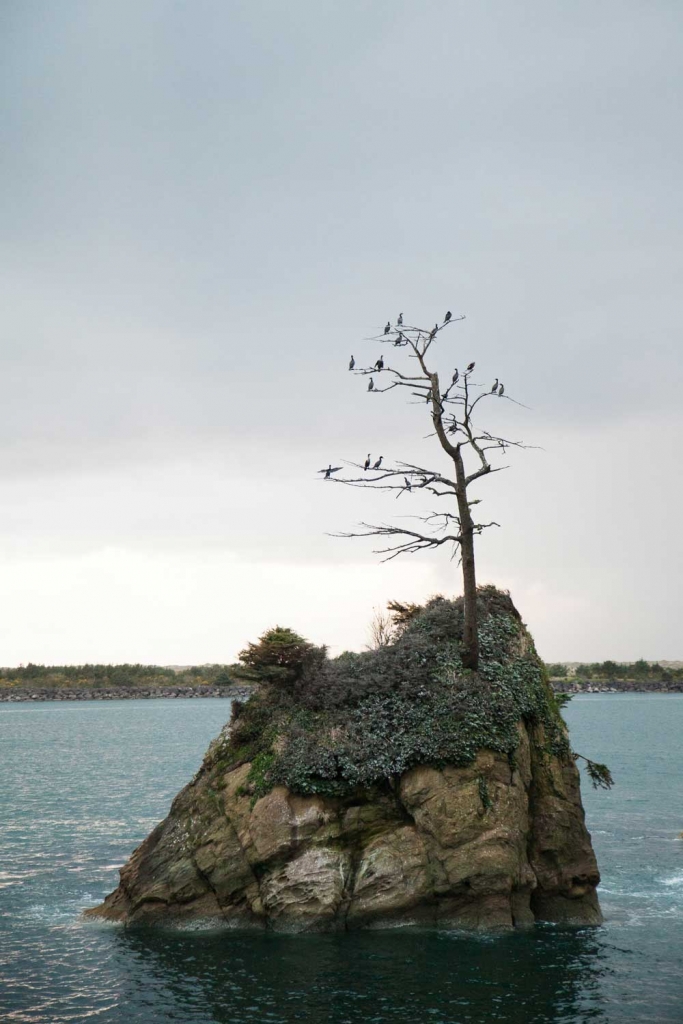
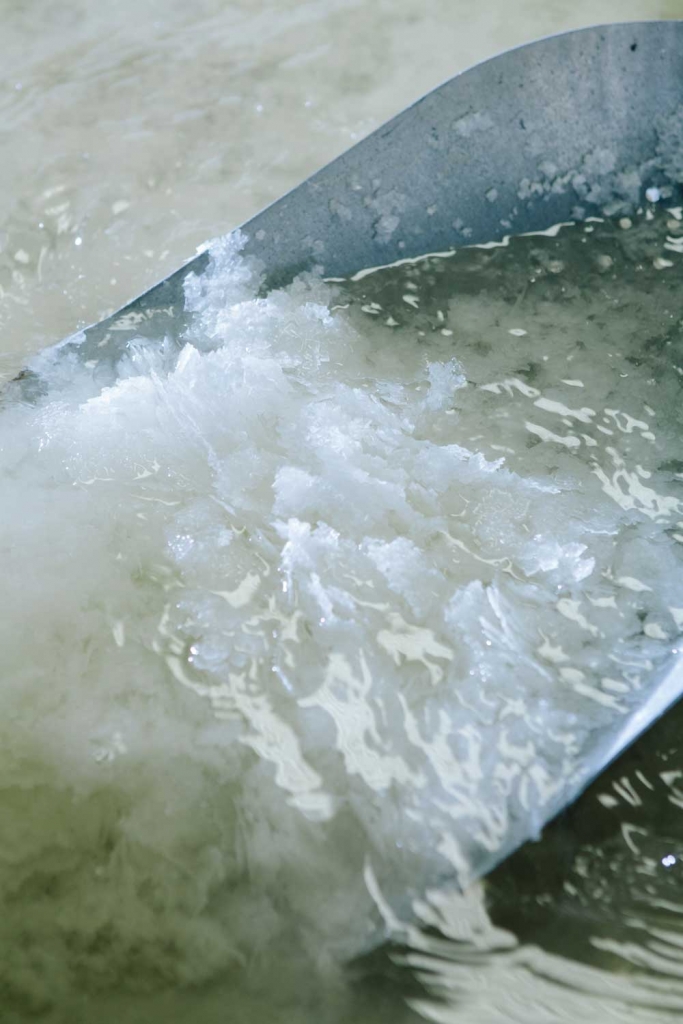
Across these many coastal locales, salt is a constant. It appears in countless subtle varieties, reflecting a thousand small factors at play in each environment. Ben Jacobsen, founder of Jacobsen Salt Co., saw enormous potential in all those tiny details, imagining in their sum the solution to something that was lacking. To him, it made no sense that America, a country with such sprawling coastlines, surrounded by so much ocean, had not yet produced a great local sea salt for its now-thriving culinary scene.
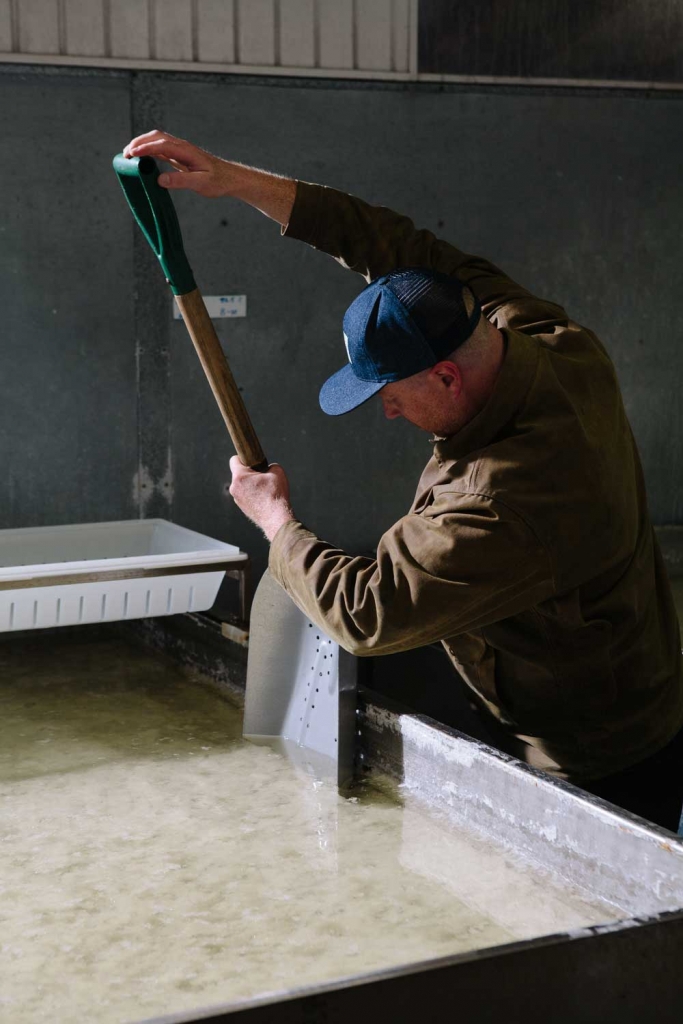

And so Jacobsen meticulously tested sea water at 27 locations along the Pacific Northwest, from Neah Bay at the northwesternmost point of Washington down to Gold Beach in Oregon, a span of almost 1,000 km of Cascadian rainforest abutting the northern Pacific Ocean. He drew samples of water, brought them back to his home base in Portland, and made salt from each one. He compared the different salts according to taste, texture, and colour. By this process, Jacobsen determined that Netarts Bay, an oyster-farming hot spot in a relatively shallow estuary, possessed “far and away the best sea water.” A reflection of its source, the salt from Netarts tastes “really clean and briny with no bitterness . . it’s really light and flaky with very little external minerality to it,” the colour, a “brilliant white.” Satisfied that his search had been successful, Jacobsen set up his artisan salt works here and began to put into practice the slow, handmade approach to salt making he had honed over the previous two and a half years.

With oysters and shellfish featuring prominently in culinary trends, we’re developing better language to talk about the environments where such things come from. Just as winemakers often talk about the importance of terroir, the precise, hyper-local geography where a grape grows, shellfish lovers have taken to describing the oceanic equivalent as “merroir.” Jacobsen explains: “A good way to illustrate this is that an oyster that’s raised on the west coast of Vancouver Island versus the island’s east coast — even though they are genetically the exact same oyster — most likely is going to taste drastically different, and that’s because of the sea water in which it grew up.” Salt, it turns out, works similarly; it carries with it traces of the precise marine environment from which it was harvested. “People say that salt is salt — and it is — but, you know, there’s definitely a merroir that’s associated with each different location you’re getting sea water from.”
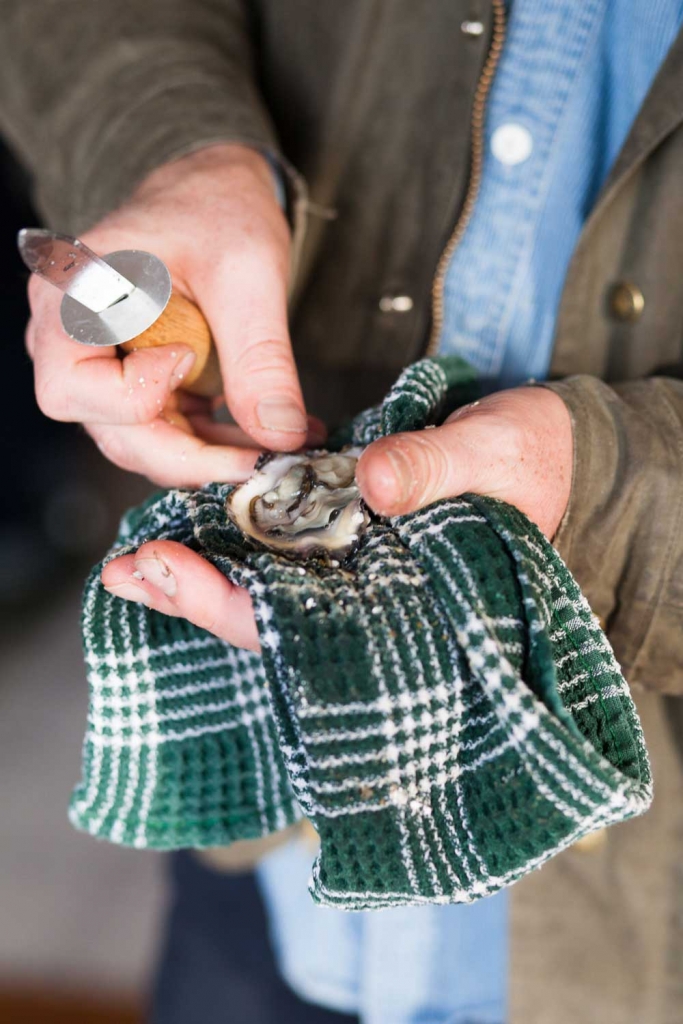
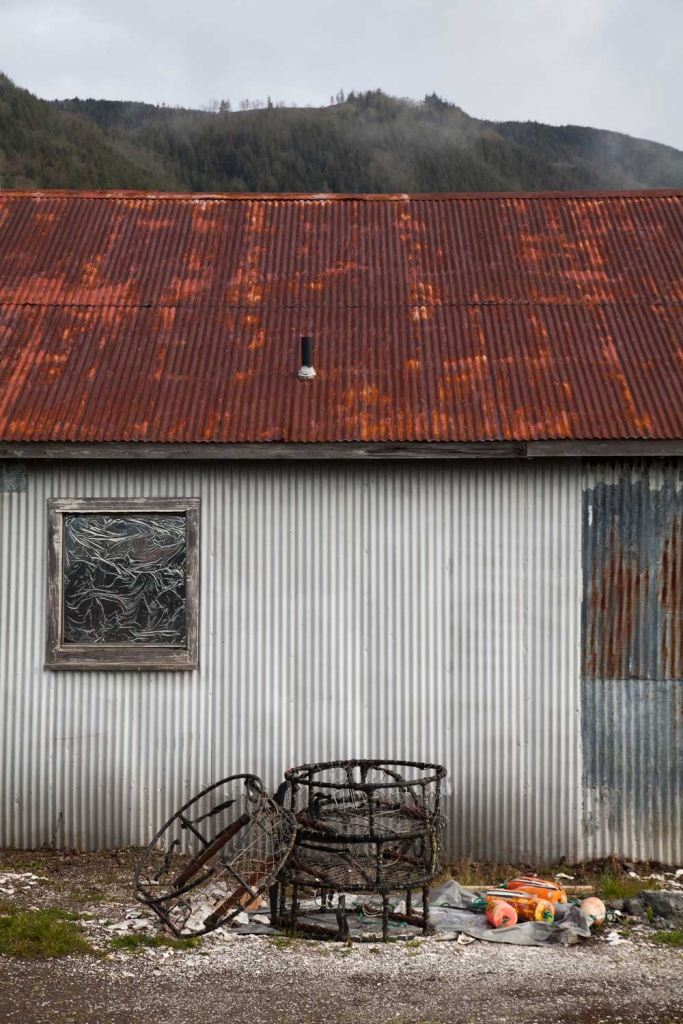
All this is to say that the breathing earth, the cycles of life and weather on a particular piece of land, shapes the fruits of its trees and gardens, the flesh of its wild animals, and the minerals of its soils and sea water. Simply, the health of the land and the food it produces are profoundly and inextricably connected. Of course this is true, and the knowledge isn’t new: Indigenous understandings have affirmed this vital link for a very long time. Netarts Bay, in fact, got its name from the language of the Killamook Native American tribe: “Ne ta at” means “near the water.” The local archaeological record shows that Indigenous people occupied the land now known as Netarts, in various settlements, for at least hundreds of years.
So what makes Netarts Bay so enduringly special? For Jacobsen, the first element is its unique geography. Crucially, there are only two freshwater inputs into the estuarine bay. On the Oregon coast, which gets a lot of rainfall, this means remarkably high-salinity sea water, refreshed with every tidal change. And as the water passes into the bay, it moves through a massive living filtration system, composed of oysters and other bivalves which are farmed there in great numbers. According to Jacobsen, “oysters and bivalve shellfish filter out calcium, algae, and other nutrients, and so by the time sea water reaches us it’s in a much better state than just raw ocean water.”
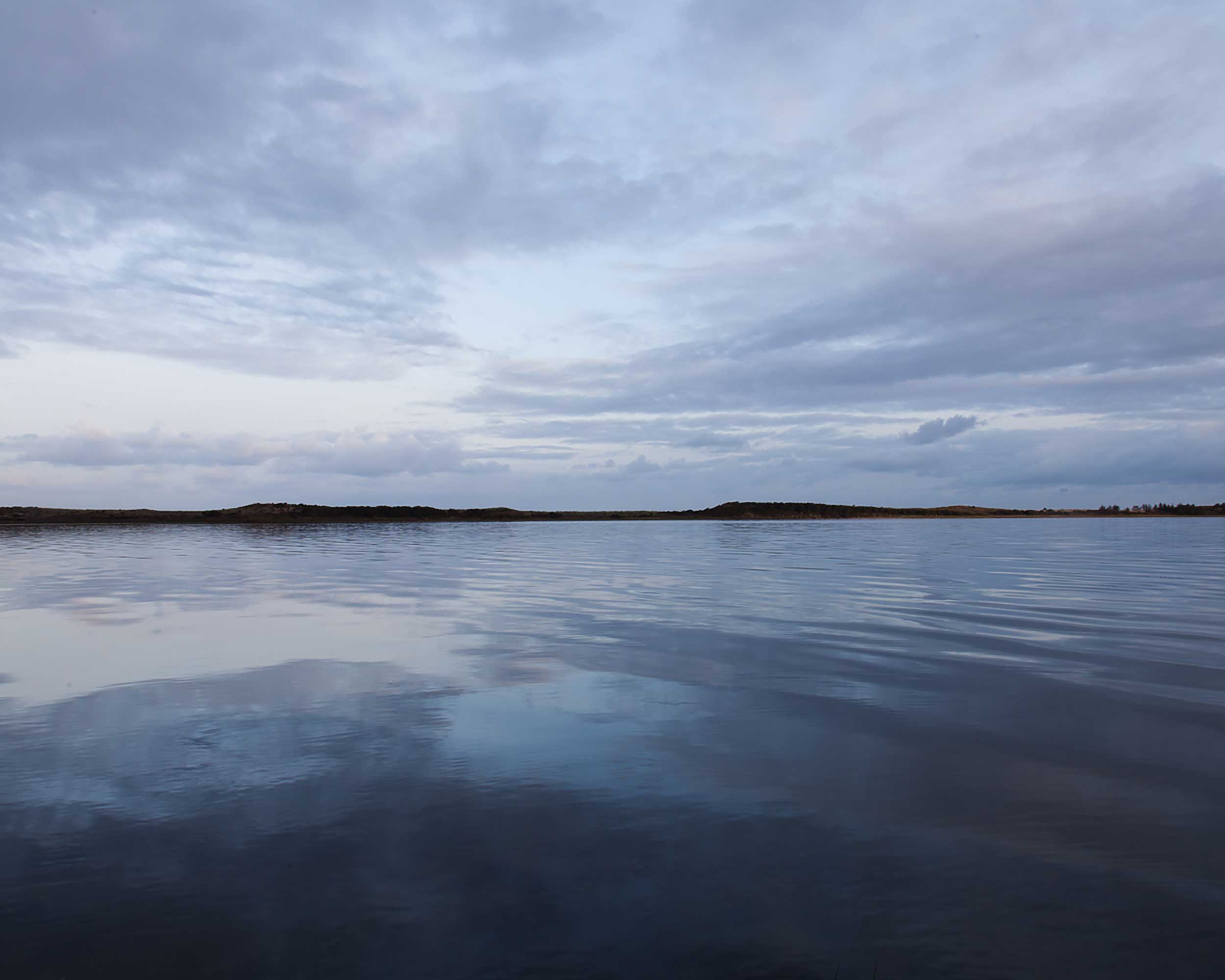
In her bestselling 2017 book, Salt Fat Acid Heat, Samin Nosrat reminds us of the many crucial roles that salt plays in everyday cuisine. She emphasizes the fact that, in addition to enhancing the flavours of other ingredients, salt has its own distinct but underestimated flavour and texture profiles. The merroir plays a huge role in determining these, but Jacobsen insists they’re also a result of the care and intention invested in the refining process.
You can make salt in a day if you want to, says Jacobsen, but time and care make all the difference. The process at Netarts Bay takes two and a half weeks to complete. Salt makers monitor it constantly, taste frequently, and adjust variables to achieve precise results. The longer the salt crystals are allowed to develop undisturbed on evaporation pans, the more pure the result. It takes a kind of patience and care that a larger, more automated facility simply couldn’t replicate.
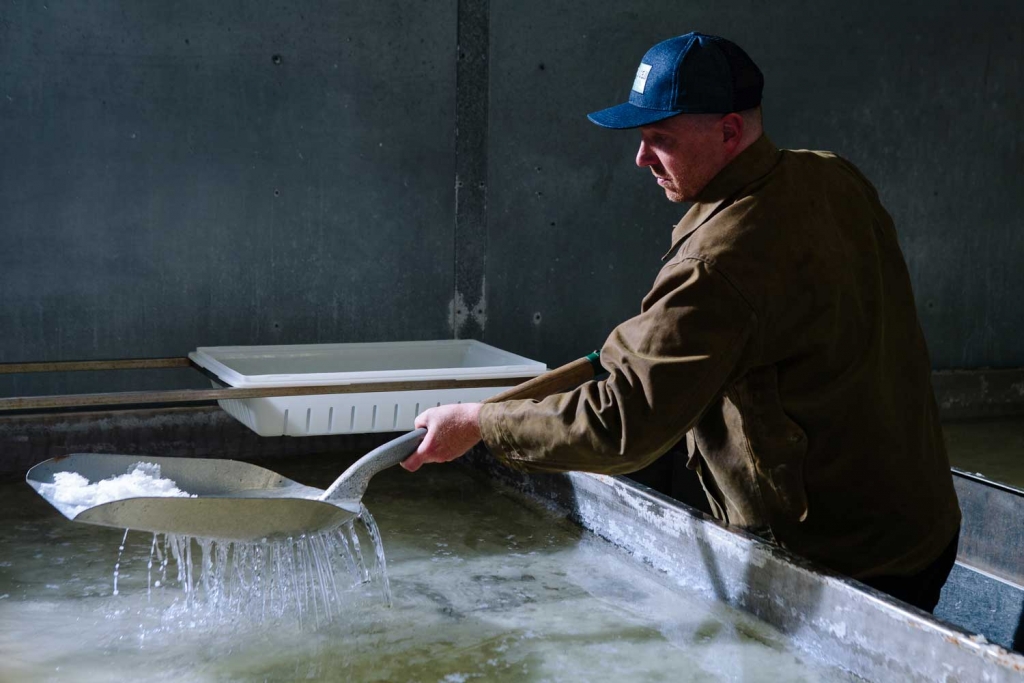
For many, 2020 has been a challenging year, and the state of Oregon has been particularly hard hit. Jacobsen had to pause operations last spring to figure out how to assure the safety of its staff and customers during the initial chaos of COVID-19’s emergence in the U.S. Just as they were beginning to stabilize by late summer, Jacobsen Salt Co. had to pause operations again for a few days because of an unprecedented season of wildfires, some of which encroached closely on the city of Portland itself. For a few days, because of the smoke, Portland’s air quality was the worst in the world. “That first walk outside under clear skies made you appreciate fresh air so much. It reinforced how dependent we are on our environment. We are immensely tied to our natural surroundings, and it’s sometimes too easy for people to forget that.
Jacobsen’s voice registers the urgency of the moment, and his desire for change. More than most, he understands the stakes of climate change, not only for his company and customers, but for the mosaic of small living variables that compose the richness of the salt he harvests. Slowness and intention need a healthy space to thrive.
Never Miss Another Issue
Two issues per year
25% OFF previous issues
Free Shipping in Canada